Jean-Baptiste-Camille Corot (1796-1875)
Get a Corot Certificate of Authenticity for your painting or a COA for your Boucher drawing or print.
For all your Corot artworks you need a Certificate of Authenticity in order to sell, to insure or to donate for a tax deduction.
How to get a Corot Certificate of Authenticity is easy. Just send us photos and dimensions and tell us what you know about the origin or history of your Corot painting, drawing or print.
If you want to sell your Corot painting, drawing or print use our selling services. We offer Corot selling help, selling advice, private treaty sales and full brokerage.
We have been authenticating Corot and issuing certificates of authenticity since 2002. We are recognized Corot experts and Corot certified appraisers. We issue COAs and appraisals for all Corot artworks.
Our Corot paintings, drawings and print authentications are accepted and respected worlwide.
Each COA is backed by in-depth research and analysis authentication reports.
The Corot certificates of authenticity we issue are based on solid, reliable and fully referenced art investigations, authentication research, analytical work and forensic studies.
We are available to examine your Corot painting, drawing or print anywhere in the world.
You will generally receive your certificates of authenticity and authentication report within two weeks. Some complicated cases with difficult to research Corot paintings or drawings take longer.
Our clients include Corot collectors, investors, tax authorities, insurance adjusters, appraisers, valuers, auctioneers, Federal agencies and many law firms.
We perform Camille Corot art authentication, appraisal, certificates of authenticity (COA), analysis, research, scientific tests, full art authentications. We will help you sell your Camille Corot or we will sell it for you.

Hailed by critics as being the father of Impressionism before its time, Camille Corot spent most of his life detached from the art world. It was only towards the end of his career that up and coming artists began to see the importance of his work, thus naming him “le Père Corot.” Though he was the supposed father of pre-Impressionism, Corot did not appreciate the work of his younger contemporaries, such as Monet and Degas. One only has to look at his work to see the vast difference in his style and the style of the late 19th century bohemian Parisians.

In recent years, the floodgates have seemed to open for authenticating Corot’s work. We have authenticated several of Corot’s pieces and find that his work is in great demand and surfaces often. He is now so highly regarded in the art world that critics and artists alike regard him as a rival to Cezanne.
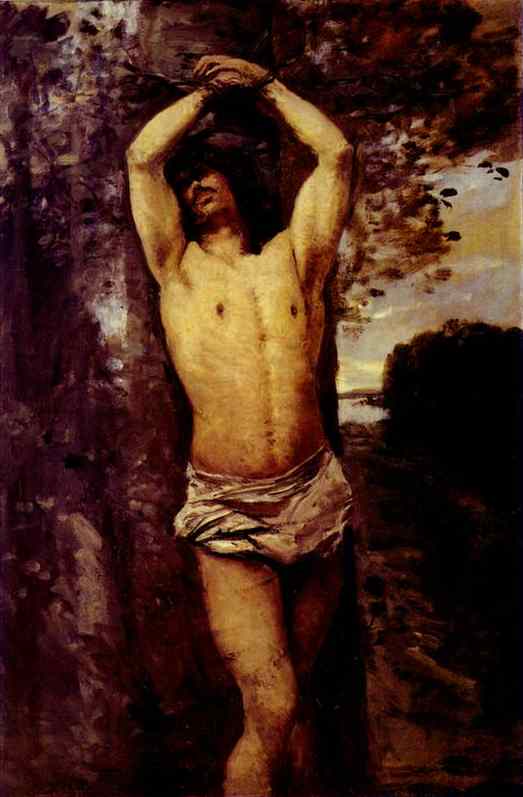
French born, Corot was able to pursue art at a young age, traveling to Rome and studying the masters. He traveled abroad and in France extensively, and took formal schooling at the Atelier Suiss and studied under classical landscapist painter Michallon. During his training he also became associated with the Barbizon school. However, Corot would often say that he was self taught, and perhaps in general he was, through his travels abroad and exposure to the masterworks of the past.

Corot loved the outdoors, and this is obvious in every one of his paintings. He was not interested in painting scenes with social meaning, as some of his contemporaries were doing. He did not incorporate mystery or hidden meanings—he simply painted to bring out the beauty of his favorite subjects. His compositions were almost always clearly organized and balanced, which attribute to the aesthetically pleasing nature of his paintings, like in “Memory of Montefontaine”.
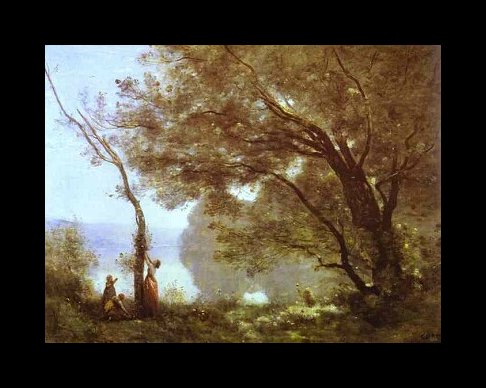
Above all, Corot was a master landscape painter. Sometimes employing plein-air technique, other times, sketching his scenes outdoors and finishing them at the studio, Corot set the ground works of Impressionism. He was clearly a neo-Classical Realist painter (though often abandoned methods learned in the Classical school), but his methods of using light were remarkable, and he was fond of using the loose brushstrokes that became common among the Impressionists. Unlike the Impressionists, he did not employ a lighter color palate, in fact, he used darker tones and shading in the style of the old masters. However, before the likes of American painter Albert Bierstadt, Corot was able to produce a “golden light” which radiated from his landscape scenes. One example is “View of the Riva in the Italian Tyrol”.
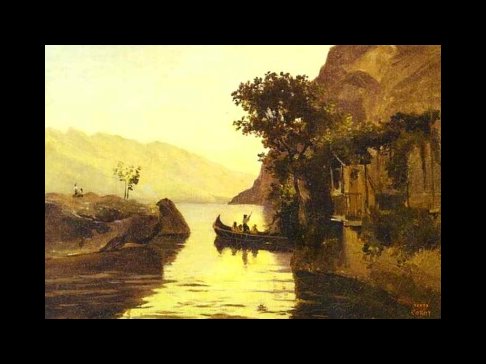
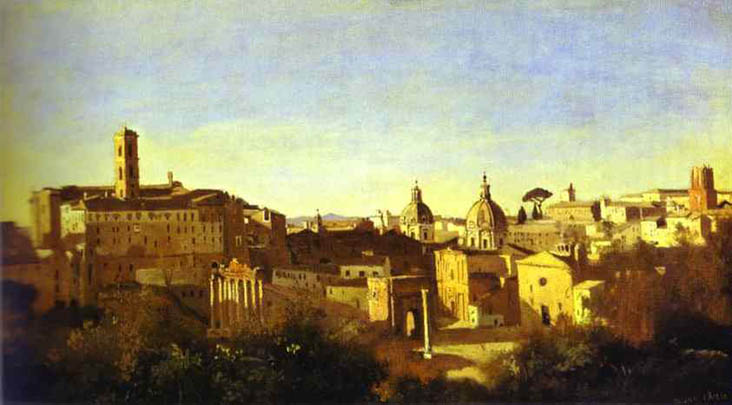


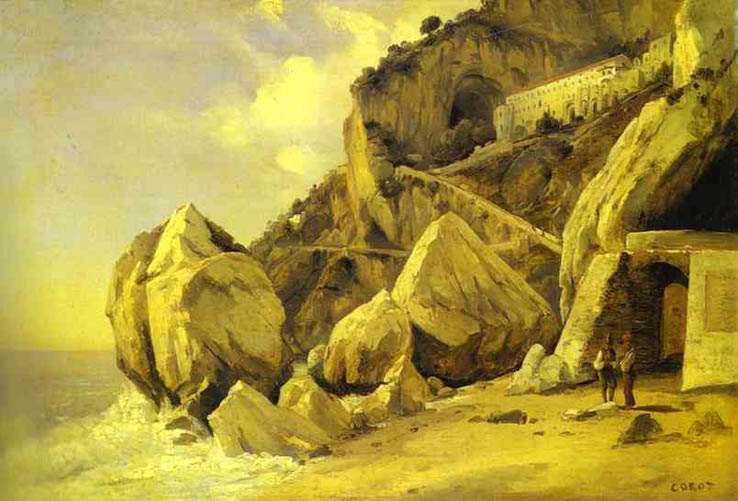



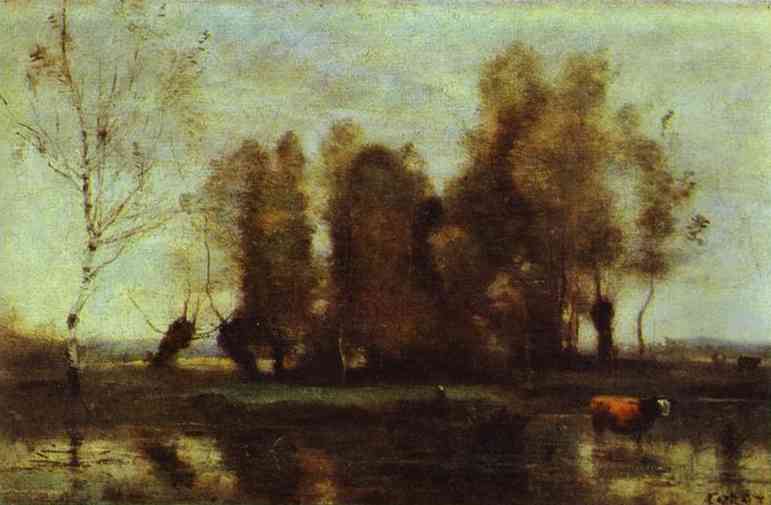
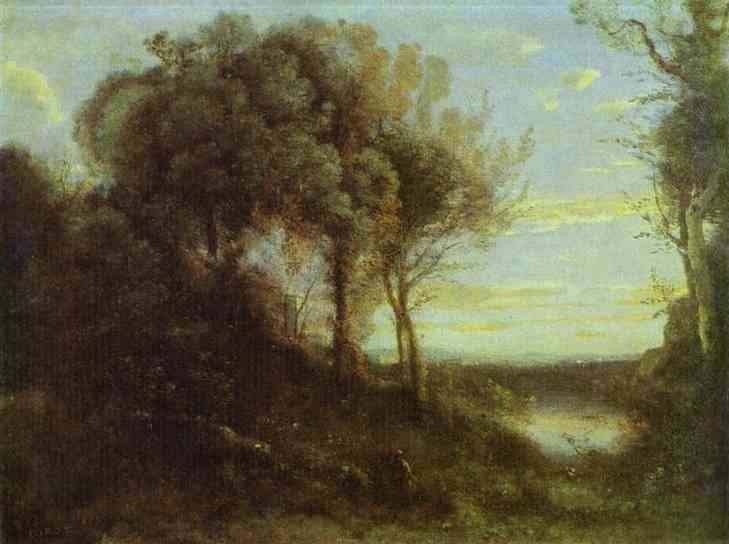

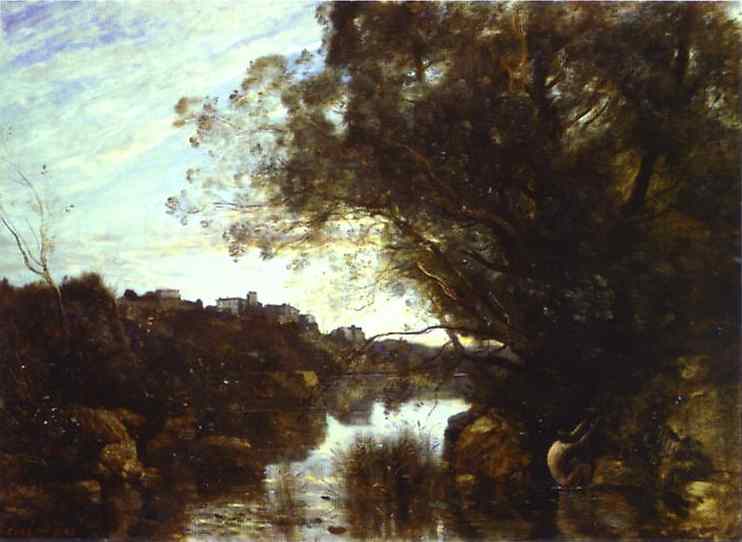
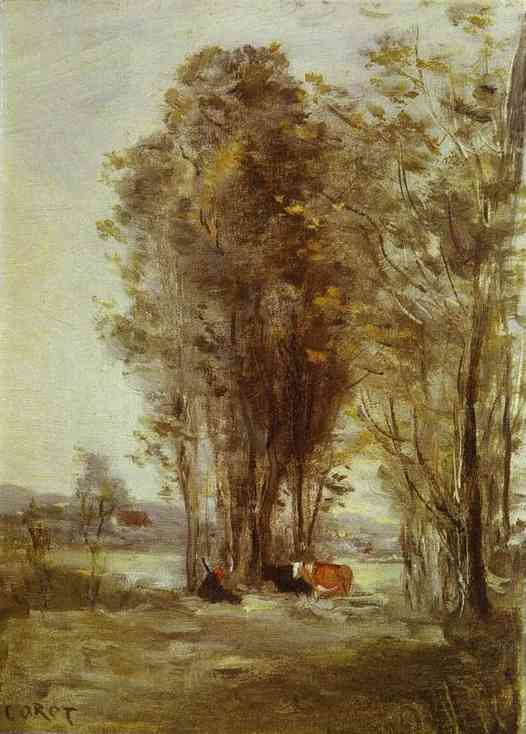

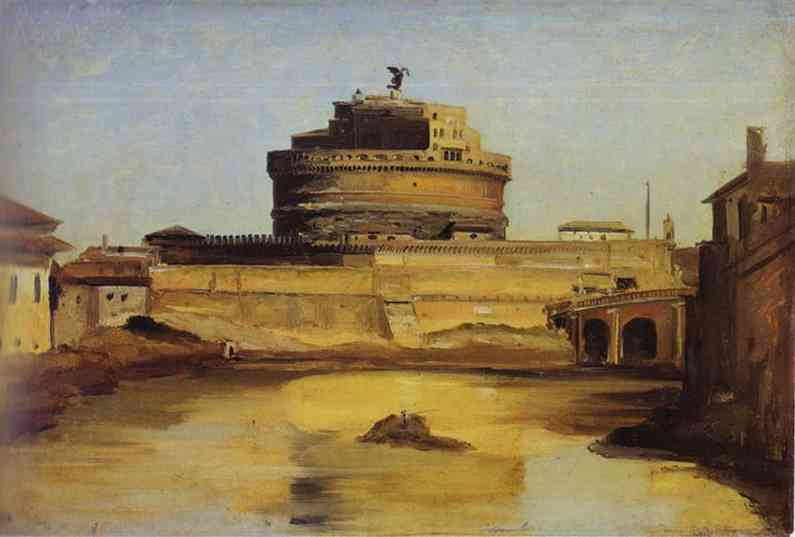

Note the realism of the light on the water, yet the slightly loose brushstrokes around the house on the shore and the dark tonalities. His understanding of light even extended to painting scenes in low light, thus producing a “silvery” effect. This is the style of Corot—one part Realism, one part Impressionism with an undercurrent of Classical elements.While Corot preferred landscapes over portraiture, he painted them from time to time, usually portraits of himself, friends or acquaintances. These portraits are usually highly Realist and Classical in their nature, like this portrait of “Agostina”.
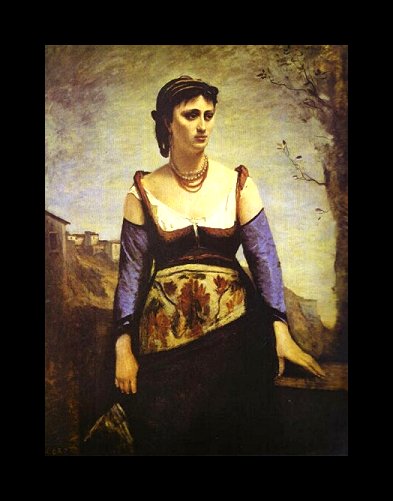
The style of this painting is very similar to the composition of da Vinci’s “Mona Lisa”—Corot applies a Classical color palate and other Classical elements such as the landscape background.
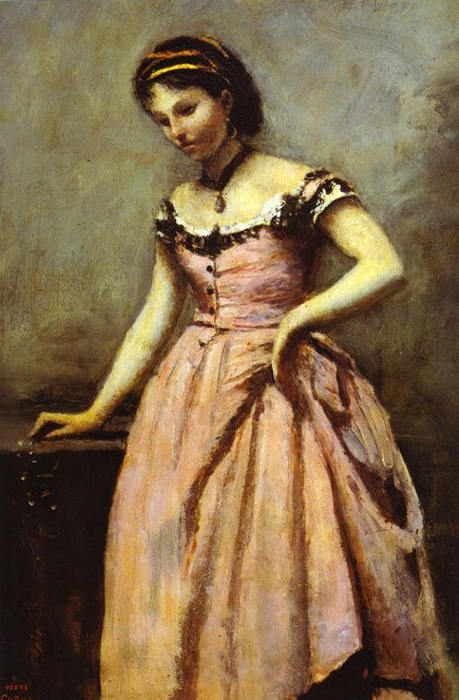
Whimsy is also a surprising element to Corot’s work. Like many Classical period paintings and frescoes, Corot incorporated idyllic Renaissance-style scenes of people frolicking and playing in his landscapes, like in “A Nymph Playing with Cupid”. Similarly, he painted biblical scenes of the crucifixion and the baptism of Christ, historical scenes, and also painted his version of the Greek tragedy of Orpheus and Eurydice in “Orpheus Leading Eurydice from the Underworld”
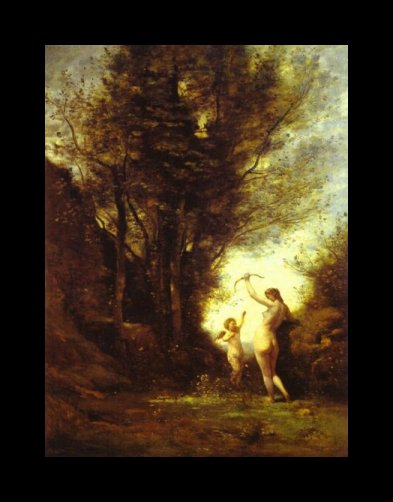
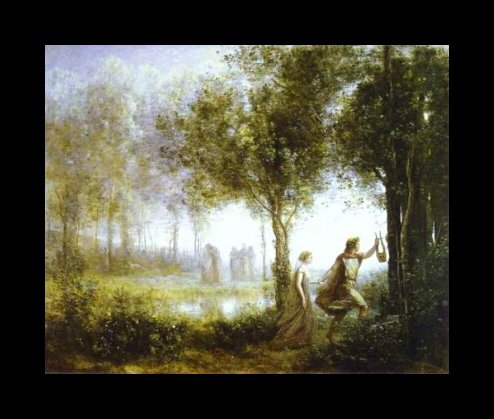
Many of these historical or whimsical scenes were painted during the frigid winter months when Corot could not go out to paint his beloved outdoors.

Even though Corot is known for his oil paintings, he also did a number of drawings, watercolors, prints and glass painting. Some critics have called his drawings awkward. This leaves an open possibility for unauthenticated Corot drawings to still be in existence if his drawing capabilities were not up to par with his painting—some may have been ignored or misattributed. For example, this etching “Le Dome Florentin” looks something more likely to have been drawn by the hand of a late Impressionist than by Realist Corot
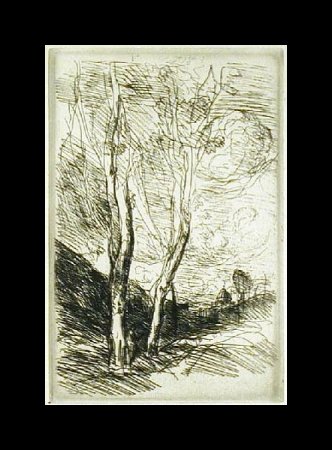
Though this is a print, undoubtedly many sketches still exist that look similar to this. Corot would sketch the composition to many of his paintings before finishing them in the studio, and to own an original sketch similar to this print would be quite a find.
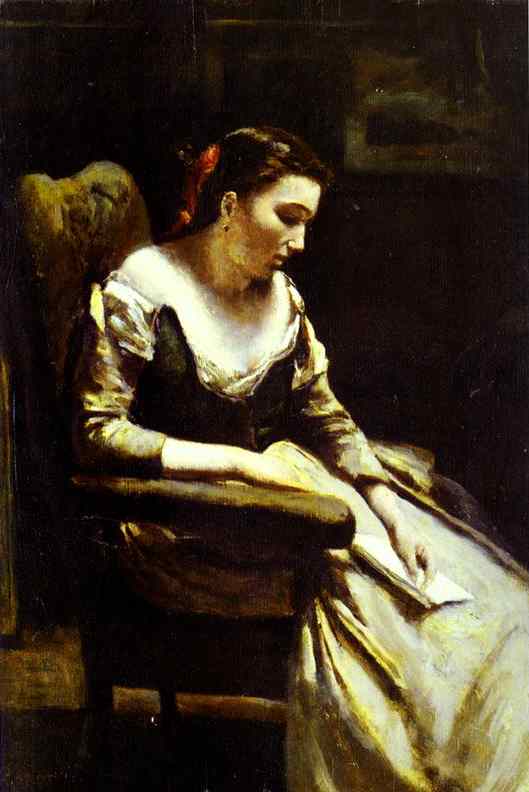
Though he was not nearly as celebrated during his lifetime as he is now (as is usual amongst great artists), his work was often imitated, even before his death. This was partially his fault, due to his generous nature of lending out his paintings as “inspiration” to other painters at the time. It is rumored that, among them, artist Andre Julien Prevost was one of the many to imitate and pass off his own work as Corot’s. In many circumstances, it is said that Corot took pity on his pupils and friends and lent his signature or artistic hand to their works.

Therein lays the problem with certain aspects of authenticating a Corot. Certain dating methods will show that a forged piece is from the same era as Corot—aging and older oil paints and canvas for example. However, only a trained eye and knowledgeable authenticator will be able to tell the difference from a forged Corot or an original.
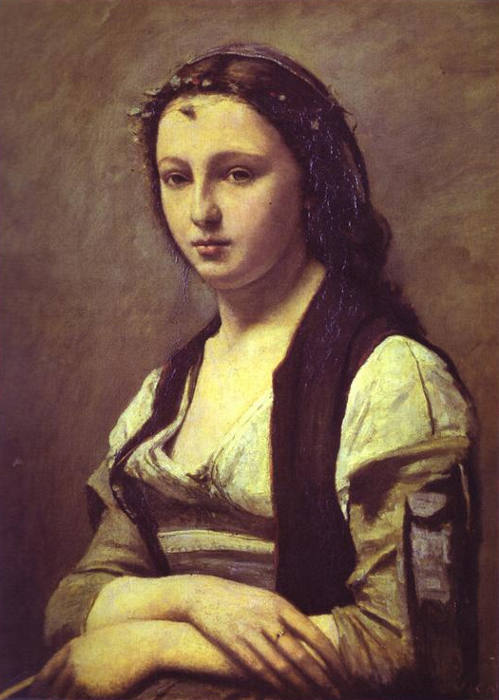
This should not leave you discouraged if you Do you think you may own an original Corot, be it a watercolor, oil painting or print. He was a very prolific artist, and painted up until his death, leaving a massive oeuvre of work behind him.
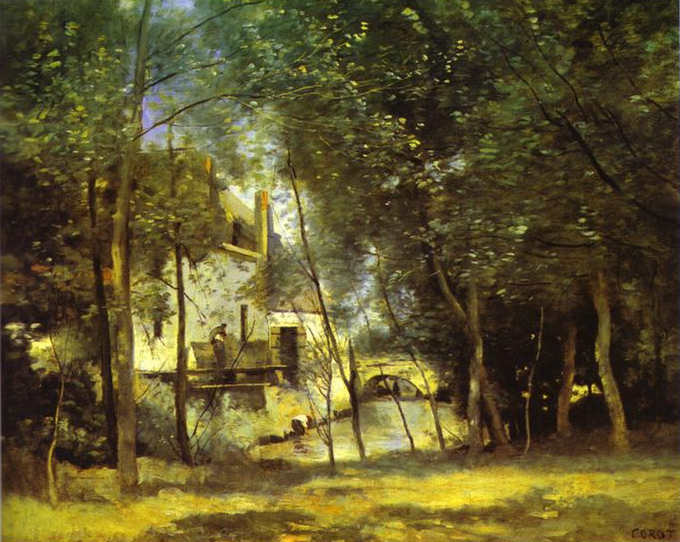
Today, Corot’s work hangs on the walls of prestigious galleries worldwide, including the Louvre and the Metropolitan Museum of Art, and possibly even on the walls of your own home. He was a sincere and sometimes contrary painter, whose generous nature with his name and artwork is leaving some authenticators baffled still today due to imitators.
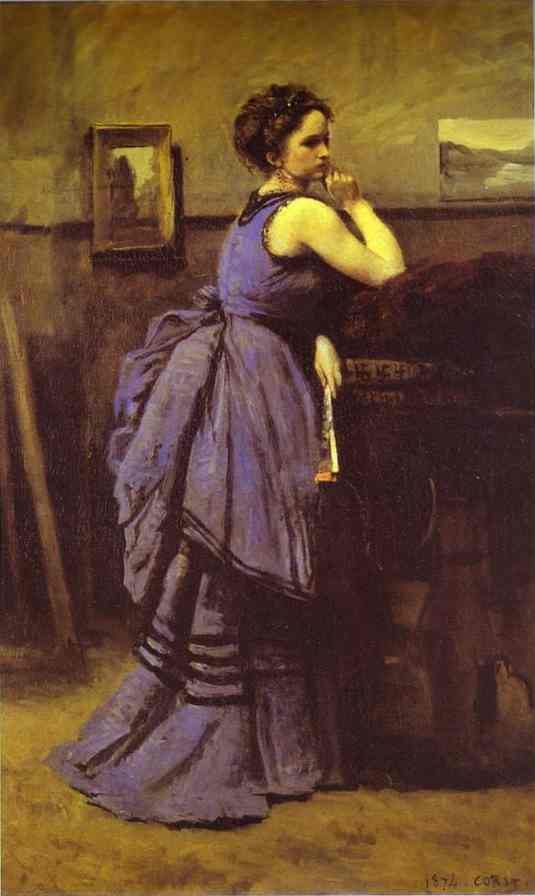
Still wondering about a painting in your family collection? Contact us…it could be by Camille Corot.
